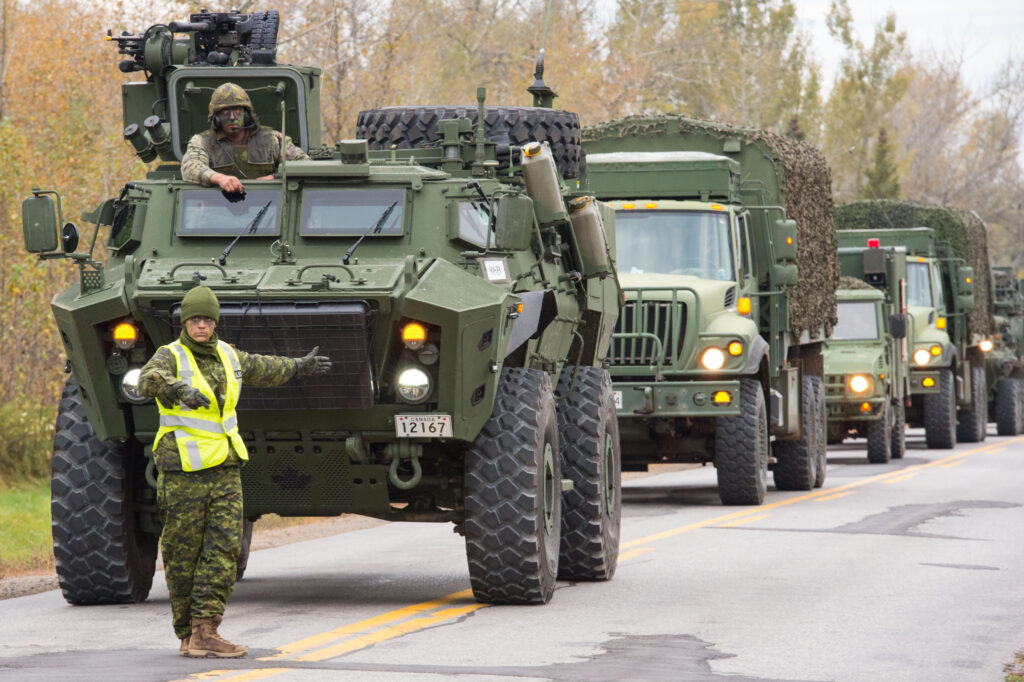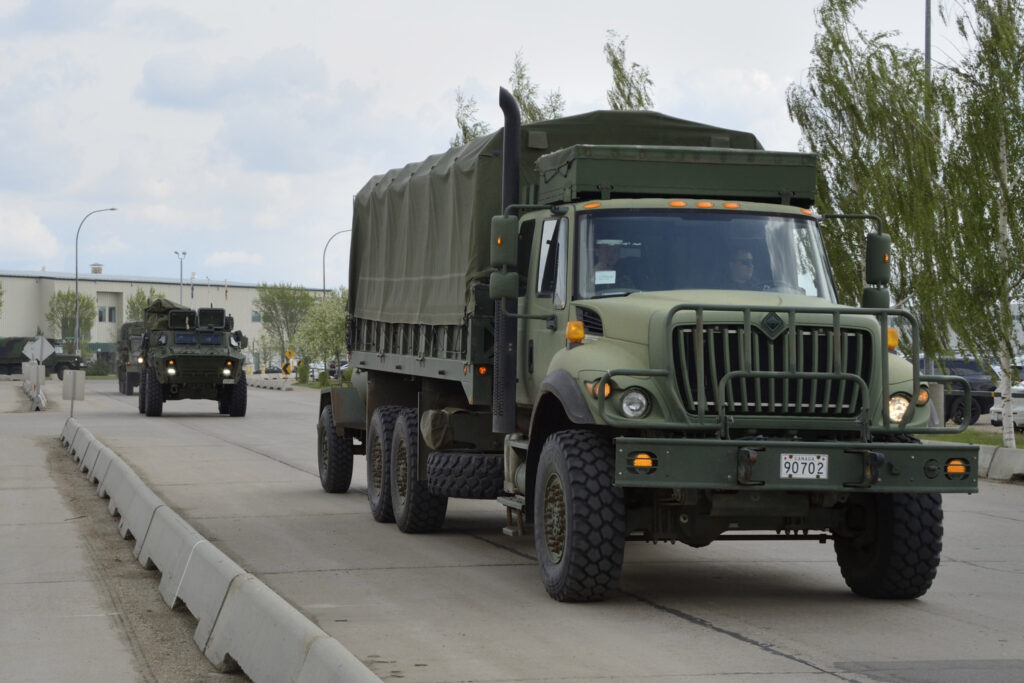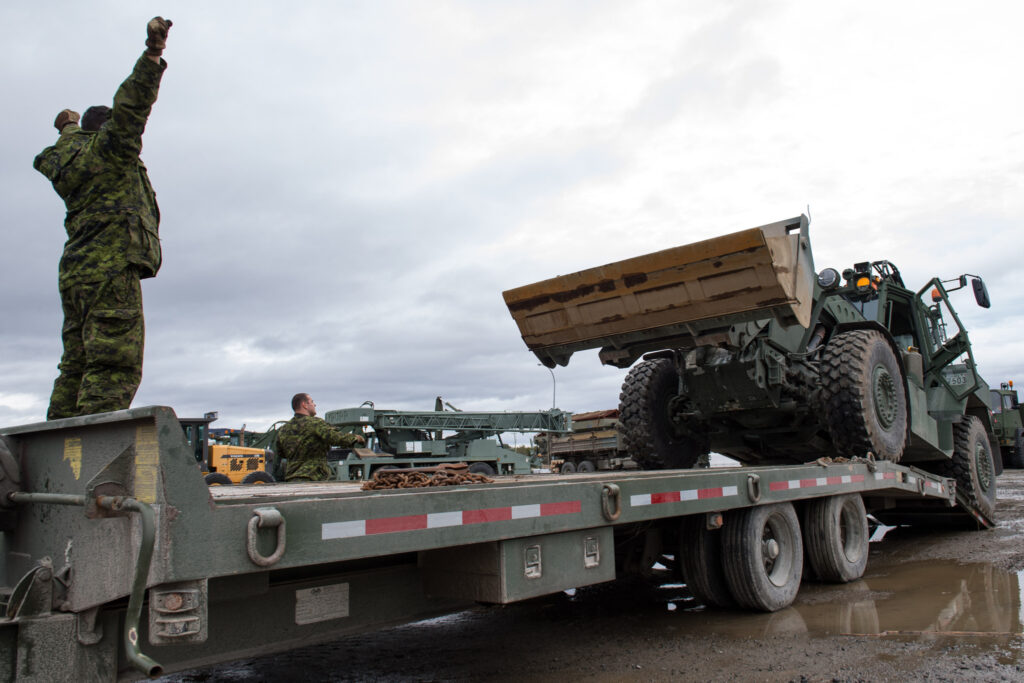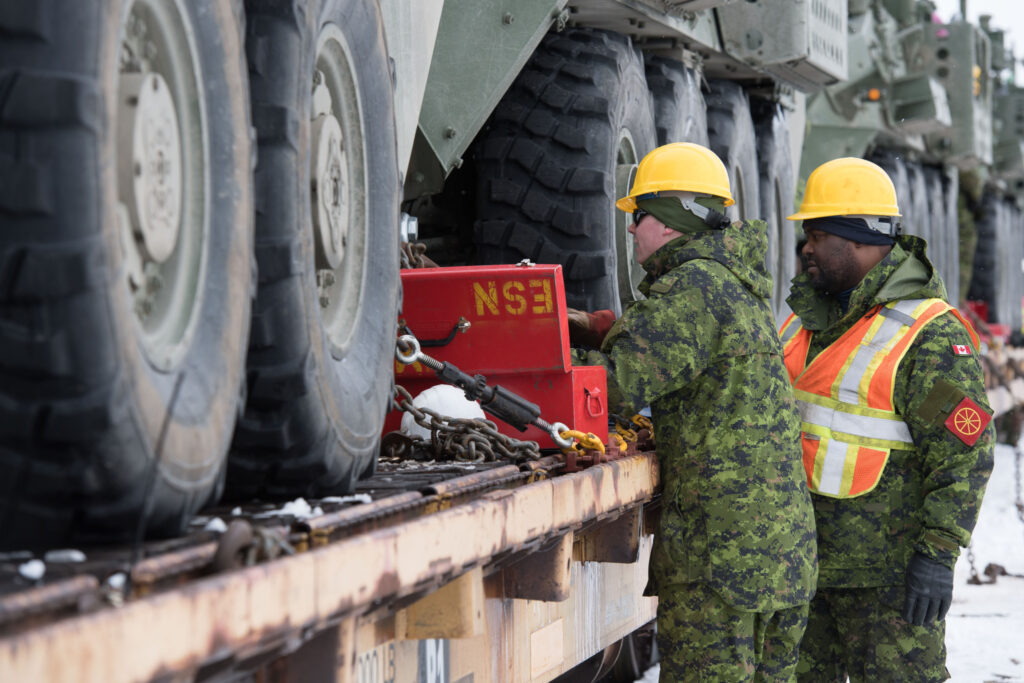Trucking offers veterans a path to second careers
The first heavy vehicle that Doug McGowan drove for the army was a different beast.
The three-axle Grizzly, designed for mechanized infantry units, supports a .50 caliber heavy machine gun and 66-mm smoke grenade launchers. The trucks and other equipment he drove around the farm didn’t have options like those.
But driving is driving.

It didn’t take long to show he could maneuver the vehicle around a course defined by 45-gallon drums, set up to identify recruits who would be a good match for additional training with wheeled equipment.
“They wanted to see if you could back it up with your buddy to help guide it,” McGowan says, referring to the process used to screen those who had just emerged from battle school.
“Some guys had no clue,” he adds with a chuckle.
There still plenty to learn in the training that followed, of course. Each class covered something different. Air-over-hydraulic brakes. Exhaust systems. Drivelines. Electrical systems.
“Every day you’d learn another system on the vehicle and you learn how to change tires, and you learn how to deal with a turbo fire,” he says.
Then it was off to a communications course where he waded into vehicle electronics: “They would screw with your stuff. They’d break something, or disconnect it, and then you’d have to go fault finding.”

Marching to a trucking career
The driving and maintenance experience laid the groundwork for a future career path in trucking – including a Highway Star of the Year honor — that now sees him hauling B-trains for Westcan Bulk Transport.
But there were hurdles along the way, even though trucking looked like a natural choice.
McGowan knew he didn’t want to work in a cubicle. Had he not been injured he would likely have remained in the infantry for his entire military career. There was enough time riding a desk in the final years of service as well.
Weighing the options for civilian life, he found himself returning time and again to the work behind the wheel, and the training role he filled during military convoys.
“I always really enjoyed that. I would sit with a big grin on my face, outside,” McGowan says. “I’d think, ‘This is just great.’”
Despite the experience he had, however, it didn’t seem to matter to civilian employers. He mailed out about 100 resumes before getting a response. It took no fewer than four visits with a company looking for propane drivers before he convinced them he would be a strong hire.
He explained his credentials by grabbing a piece of foolscap and drawing silhouettes of the equipment he could drive.
They had never heard of many of them.
Recognizing the 404 credentials
The path to a civilian truck driving career has improved in the last five years, as provincial licensing offices began to recognize military driving credentials known as a DND 404.

That change was largely realized through a campaign led by Helmets to Hardhats Canada, a non-profit group more widely known for helping veterans find careers in construction. It took a central role in discussions with the Canadian Council of Motor Transport Administrators, working alongside J4 Transport, Teamsters Canada, and building trade unions.
“It’s crazy. You could drive a transport truck in the military, but not on a 400-Series highway in civilian life,” says Joseph Maloney, founder and executive director of Helmets to Hardhats Canada.
“It worked, and it’s in place, and I think besides helping veterans it also helped the trucking industry.”
Between June 2015 and December 2018, for example, Alberta found that 15% of applicants under the DND Training and Testing Recognition agreement were eligible for a Class 1 or Class 2 licence. Sixty-five percent were eligible for a Class 3 licence.
The program has also expanded beyond members of the regular forces to include reservists.

“To the many military personnel with driving qualifications who are transitioning to civilian life, this is an excellent opportunity,” said Lt.-Col. Adam Zima, commanding officer of the technical services branch at 5th Canadian Division Support Base Gagetown, when the qualifications were first recognized in New Brunswick.
“It will make the transition from military service to the civilian workforce quicker and more affordable.”
“I would say the standards are not less than provincial. In many ways they’re more robust,” adds Capt. Greg Adamthwaite, director – transition services and policy for the Canadian Armed Forces Transition Group.
Building bridges to trucking careers
McGowan still sees a gap to be closed, however.
“A lot of guys don’t know their 404s are now recognized,” he says as an example. And he wonders if the message about trucking-related job opportunities are reaching military personnel during their transitions to civilian life.
“That’s the connection that’s being missed, and it would be so easy.”
Trucking industry employers could certainly benefit from other job-ready attributes the veterans have developed.
Maloney refers to things like a sense of discipline and computer literacy. These new hires will show up on time. Adamthwaite refers to teamwork and critical thinking.
Support for military personnel
Military personnel have access to several tools that help make the career connections.
Adamthwaite offers the example of the My Skills and Education Translator (MySET), which identifies the post-secondary institutions that recognize prior training for military skills.
Qualifications can also be compared between the Military Occupational Structure Identification Code (MOSID) and the National Occupational Code that includes categories for every job type in Canada.
About 5,200 people leave the Canadian military each year, presenting a potential labor pool for the trucking industry as it looks to address things like a driver shortage, Maloney says, referring to the advantage of making such connections.
“They can linger out there for a long time before they find their way.”
Many of these would-be truck drivers have never even considered civilian work. While American recruiting efforts often focus on military service as a gateway to civilian careers, the focus in Canada tends to be based on a long term in uniform.
“The Americans are much more ready to promote that type of short service and career afterward,” McGowan said.
Few people who sign up to serve in the military think about the civilian life that will follow, Adamthwaite agrees. But some of them see the careers come to an end before they’re expected.
It’s why new transition units are currently being established across Canada to offer more help with the changes.
Enhancing support
Some support is already in place.
Central to that work is its Second Career Assistance Network (SCAN), which offers insights into everything from pensions to resumes, and provides meetings with career counsellors.
Programs also include job fairs in specific regions that present opportunities for industry employers to reach military members, Adamthwaite says.
“We’re now in the process of trying to really establish a more robust relationship with Veterans Affairs,” he adds.
“Veterans Affairs Canada hosts employer summits and career fairs to assist employers in understanding military context and the value of hiring veterans,” notes Emily Gauthier, a spokeswoman for Veterans Affairs Canada. Job opportunities can also be shared through www.jobbank.gc.ca.
But the challenges of identifying a new career path, and ensuring skills are recognized, aren’t unique to those who have a focus on trucking.
In his naval career, Adamthwaite was the captain of a deep-draft supply ship that could carry 6 million liters of fuel.
He wouldn’t be qualified to do that in a civilian context, either.
“Every single person,” he says, “is going to have a different story, is going to have a different skillset.”
Have your say
This is a moderated forum. Comments will no longer be published unless they are accompanied by a first and last name and a verifiable email address. (Today's Trucking will not publish or share the email address.) Profane language and content deemed to be libelous, racist, or threatening in nature will not be published under any circumstances.
Bacrow Transport supports drivers from our Military
Weather you are a veteran or a newbie you still make minimum wages. How “FEd” up is that. I am a veteran commercial driver and only make minimum wages. The Canadian trucking industry sucks.
In response to the comments by the two gentlemen about wages. It is not the Industry as a whole, but definitely some carriers pay substandard wages. At our company our Local Drivers earn $60- $80,000 per year (4 days per week, plus some OT), most of our Highway Drivers are $90-$110,000 per year. Choose your employer carefully.
Construction job or becoming firemen or something else is a better bet in Ontario Canada
Truck drivers are poorly treated and paid as have to compete with cheap foreign workers. I have talked to many former Vet’s who drove truck and ended up in homeless shelters.